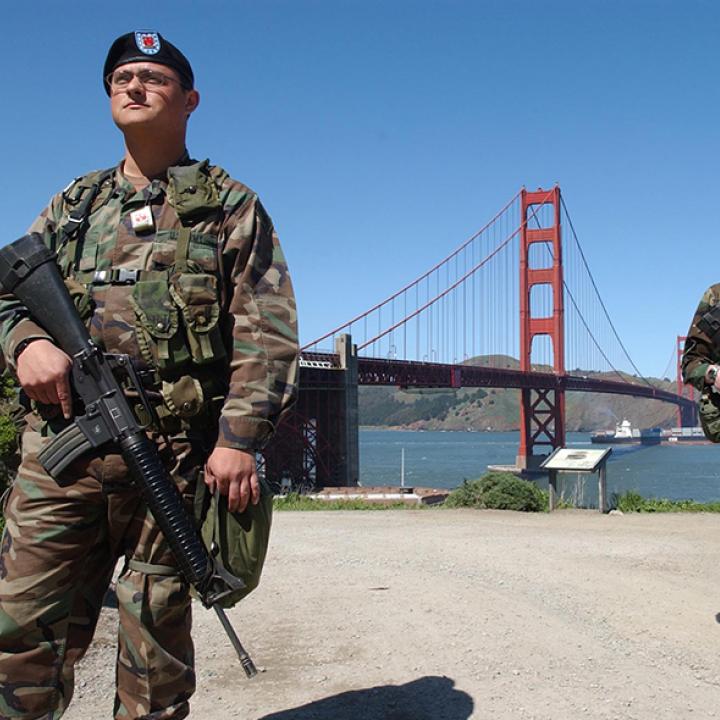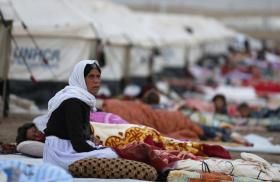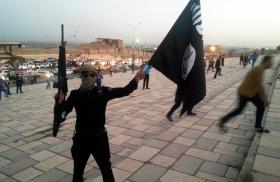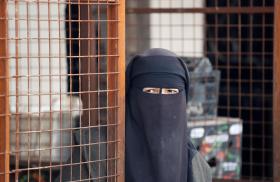
- Policy Analysis
- PolicyWatch 3452
Rethinking U.S. Counterterrorism Two Decades After 9/11

Part of a series: Counterterrorism Lecture Series
or see Part 1: U.S. Efforts against Terrorism Financing: A View from the Private Sector
Three veteran counterterrorism practitioners from recent administrations take stock of America’s overall strategy, foreign posture, and domestic threats at the dawn of the Biden presidency.
On March 15, The Washington Institute held a virtual Policy Forum with Matthew Levitt, Katrina Mulligan, and Christopher Costa. Levitt is the Institute’s Fromer-Wexler Fellow, director of its Reinhard Program on Counterterrorism and Intelligence, and author of its Transition 2021 memo on rethinking U.S. counterterrorism policy. Mulligan is acting vice president for national security and international policy at the Center for American Progress; she previously served with the Justice Department’s National Security Division, the Office of the Director of National Intelligence, and other agencies. Costa, the executive director of the International Spy Museum, served as senior director for counterterrorism at the NSC during the Trump administration. The following is a rapporteur’s summary of their remarks.
Matthew Levitt
The U.S. counterterrorism posture of the past twenty years has been very successful in preventing attacks, but it is no longer sustainable today. Other national and international security issues demand U.S. attention and fiscal responsibility, from the COVID-19 pandemic to the economy and climate change. Accordingly, the United States must figure out how to rationalize its CT posture.
These efforts will need to be pursued at the same time that Washington grapples with great-power competition. In the “4+1” framework that guides the Defense Department’s prioritization of international threats, countering terrorism remained a top priority but was placed below other goals: namely, strategic competition with China and Russia, and regional threats from Iran and North Korea. Some believe that the United States cannot engage in “peripheral” CT-rooted conflicts (e.g., Syria, Yemen) and great-power competition at the same time, but such efforts should be complementary, not mutually exclusive. For example, small investments in bilateral counterterrorism assistance can yield important cooperation on great-power issues.
In order to move from U.S.-led, partner-enabled military CT missions to partner-led, U.S.-enabled missions, Washington will need to repair its damaged credibility abroad and demonstrate the staying power to meet its alliance commitments over the long term. There is still a need for military and other kinetic CT assistance, but the United States needs to move concertedly toward a posture that is less military-centric and more focused on civilian capacity-building. Despite doing a good job of preventing catastrophic attacks on the homeland, the U.S. government has done poorly in getting ahead of adversaries strategically and preventing terrorists from radicalizing people. More individuals are radicalized today than on the eve of the September 11 attacks. The State Department’s Counterterrorism Partnerships Fund is one good example of how officials can better provide civilian CT assistance and training.
A smaller military footprint will require greater reliance on indicators and warnings from the intelligence community. Over the past twenty years, however, the community’s CT budgets have been scaffolded on top of military CT budgets, so if the armed forces shift their deployments to other regions or threats, the funding for collection platforms will follow. Policymakers therefore need to disentangle this CT funding knot to avoid losing key intelligence support in certain areas.
U.S. messaging needs a rethink as well. CT efforts should not be characterized in terms of victory or defeat, but rather as an ongoing effort in which the United States employs various tools to compete with adversaries and disrupt terrorism. By explaining that “total victory” over terrorism is neither possible nor necessary, policymakers can build public resilience for sustained CT activities.
Katrina Mulligan
Conversations about refreshing the U.S. counterterrorism architecture have been going on inside government for a while, but the country as a whole has never had a conversation about what success and failure look like in the CT domain. Following 9/11, there was a national decision to prioritize the terrorism threat, and the national security apparatus and a constellation of executive branch leaders enforced that effort quite successfully. But the challenge today is that many Americans no longer have the same level of concern about the terrorism threat. So defining success and considering what resources are necessary to achieve it are crucial.
This means discussing what America is willing to accept in the CT realm, what costs it is willing to bear, and what initiatives have succeeded or failed. Not all CT investments have yielded a good return, and an honest conversation is needed on which tools are worth keeping.
As U.S. posture changes are implemented, authorities will likely see an increased desire to manage terrorism risks through intelligence indicators and warnings. Yet CT has been a disproportionate focus of the intelligence community for quite some time, so existing capacities must be increased to support any such mitigation strategy.
Policymakers do not yet know how far diplomacy development dollars could go in countering terrorism overseas, so this remains an area worth exploring and testing. Moreover, the United States now has certain tools in its kit that did not exist twenty years ago. One of them is the State Department’s Global Engagement Center, which has not been used to its maximum capacity despite being stood up in the final year of the Obama administration and staffed by the Trump administration.
In the immediate aftermath of 9/11, the country spent $260 billion on CT efforts, and it still spends around $175 billion per year today. The government and the public need to start talking about these expenditures as part of a tradeoff conversation, because there are a lot of other things the American people want, and a lot of other priorities that affect their lives more substantially. CT funding should not be turned off, but the United States needs to think more about what it wants instead of unquestioningly and indefinitely pursuing perfect security.
Christopher Costa
On day one of the Trump administration, four problems demanded immediate attention from incoming CT officials. In addition to a pending raid against al-Qaeda in the Arabian Peninsula, they faced a pervasive threat against commercial airliners, an ongoing campaign to defeat the Islamic State, and a pressing need to help hostages being held overseas by terrorist groups.
More broadly, the terrorism threat has indeed evolved over time, but as Washington considers how to address these changes, there is a danger of overcorrection in the CT mission. Pursuing great-power competition does not have to be separate from smartly deploying small CT forces overseas. For example, a deployment intended for CT purposes could also be used to counter malign Iranian influence. It is important to recognize that CT operations are part of a larger gray zone theater that encompasses both tactical missions and battles for influence.
This also means that the United States should not precipitously declare victories in countries like Syria, where it still has small forces on the ground collecting important intelligence and working with foreign partners. Rather, it should increase its efforts to build and cultivate different kinds of long-term partnerships with allies, especially on the issue of counter-radicalization.
Domestic terrorism is a priority as well. The jihadist threat is still crucial because the ideology has never been satisfactorily addressed by any presidential administration. Any U.S. strategy will need to get to the heart of the grievances that fuel domestic jihadist radicalization—something America has never done very well. As for the threat posed by white supremacists and neo-Nazis, the 2018 National Counterterrorism Strategy reinforced the importance of focusing on that issue. These dynamics are evolving, and the current administration will have to contend with domestic terrorism head on.
Regarding reports that President Biden has ordered a review of U.S. drone strikes, every president has the right to review past policies. Under the Trump administration, the government ensured that authorities for such operations were pushed down the chain so that decisions could be made swiftly in dynamic environments, with the appropriate mechanisms in place to avoid needless casualties. The Biden administration should conduct a review, but it should not dispense with the policy because the policy worked—it was efficient, and it was not overly bureaucratic. CT operators who work in special operations across the field were very appreciative of these policy decisions.
Finally, Washington will always face the challenge of having to work with unsavory actors that align with the United States on CT efforts. Saudi Arabia is a tremendous partner in the CT fight, but the killing of Jamal Khashoggi is a serious concern. At the tactical level, the United States can certainly work with its foreign partners while putting appropriate safeguards in place to prevent them from stepping outside the lines.
This summary was prepared by Kevin Mathieson. The Policy Forum series is made possible through the generosity of the Florence and Robert Kaufman Family.








